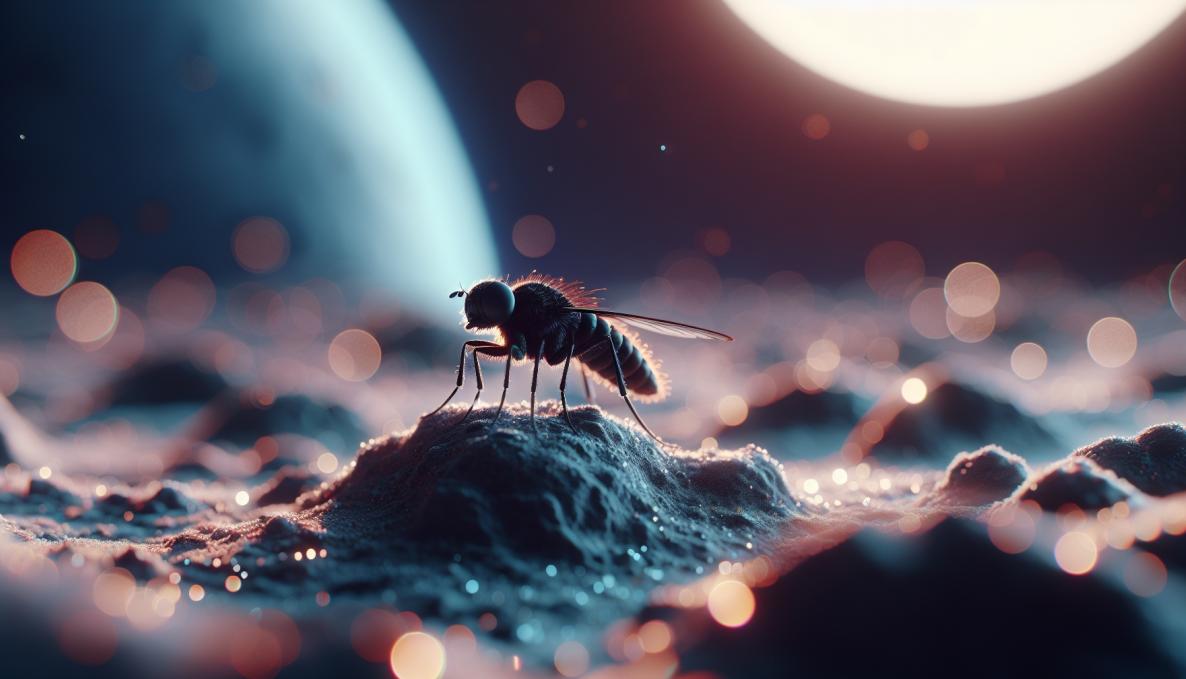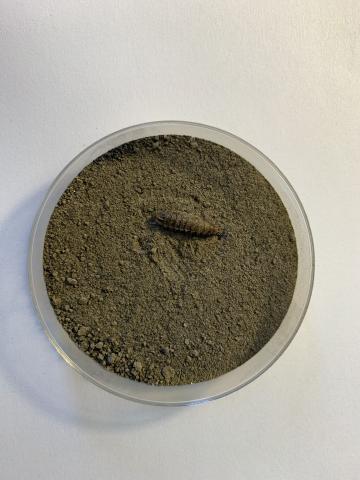Life on the Moon: a study coordinated by the Sant'Anna School demonstrates the adaptability of larvae of a particular species of fly in a lunar regolith simulant

A study coordinated by the Biorobotics Institute of the Sant'Anna School in Pisa has demonstrated the adaptability of the black soldier fly (Hermetia illucens) in a simulant of lunar regolith (the set of sediments, dust and stones that make up the uppermost layer of lunar soil). The study, carried out in collaboration with the Gran Sasso Science Institute, was published in the scientific journal Acta Astronautica.
The study shows how black soldier fly larvae manage to pupate (a metamorphosis stage in the life cycle of flies in which the insect larvae transform into pupae) even on extreme substrates such as lunar regolith: this ability may make this fly useful for providing high biological value proteins to astronauts and for facilitating the recycling of organic waste in space.
"This is a very important discovery because the larvae's characteristic of successfully pupating suggests that they could be integrated into Bioregenerative Life Support Systems (BLSS) for space missions, contributing to the sustainability and self-sufficiency of future extraterrestrial colonies," says Donato Romano, assistant professor at the BioRobotics Institute and first author of the study. The other authors are Cesare Stefanini, Professor of Bioengineering at the Sant'Anna School in Pisa and Adriano Di Giovanni, Gran Sasso Science Institute.
The potential role of the black soldier fly in Bioregenerative Life Support Systems (BLSS)
Black soldier fly larvae are an efficient bioconversion agent. The metamorphosis from larva to pupa and finally to adult is a crucial stage in the development cycle of many insects, and can be strongly influenced by soil or other substrates. This particular species of insect is able to adapt to various hostile substrates, including lunar regolith. The larvae of this fly are of great importance because they are able to convert organic waste of various kinds with very high efficiency. In addition, they contain proteins of high biological value that could support nutritional requirements as feed for other animals or even for astronauts.
"The study - continues Donato Romano - has direct implications for space exploration. The idea of a circular economy in space, with larvae disposing of waste and acting as a food source, is a significant step towards sustainability in long-term missions".
In the beginning were earthworms...
This is not the first time that the research team of the Sant'Anna School and the Gran Sasso Science Institute has studied possible interactions between biological organisms and space exploration. In 2023, a paper published in Heliyon showed how a particular species of earthworm was able to survive and reproduce on lunar regolith in order to improve its fertility, and encourage the development of future plantations on the Moon.
"One of the main challenges of long-term human space missions is the limited storage of nutrient resources and waste management. Deep space missions and the colonisation of celestial bodies will crucially depend on the presence of other organisms providing life support to astronauts. The possibility of optimised use of exo-soils (e.g. lunar regolith) for plant cultivation and other activities would offer numerous advantages in terms of reduced logistical costs and transport of resources from Earth".





